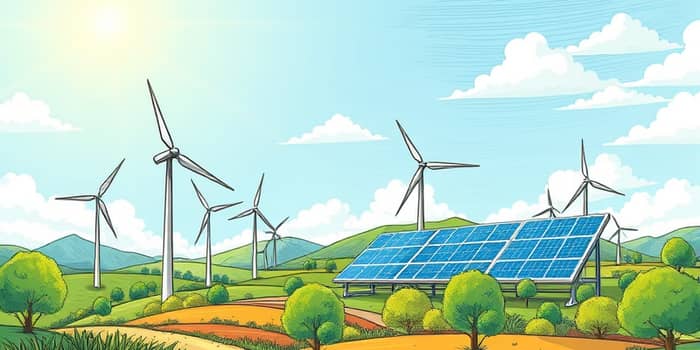
In recent years, the green energy sector has transitioned from a niche market to a core focus for global investors. What began as a moral imperative against climate change has evolved into a clear financial opportunity backed by decisive policy action. Thanks to an expanding web of incentives and regulations, renewable energy stocks are enjoying a surge in capital inflows, making them a compelling choice for portfolios seeking both growth and impact.
As governments around the world roll out new frameworks and extend existing incentives, the sector’s fundamentals grow stronger. This article explores the multifaceted drivers behind the rally in green energy equities, highlights leading companies and performance metrics, examines key challenges, and offers a forward-looking perspective on where the market is heading.
Government initiatives at federal, state, and local levels have become the bedrock of green energy expansion. By creating a stable investment environment, policymakers are ensuring that renewable projects receive the clarity and support needed to advance from planning to operation.
Investor confidence is riding high as evidence mounts for the sector’s long-term viability. From institutional funds to retail accounts, capital is reallocating towards green energy equities in anticipation of robust returns.
Several public companies have distinguished themselves through strategic expansion, consistent dividends, and innovative business models. Investors are watching these names closely as barometers for broader market sentiment.
Brookfield’s diversified portfolio and reliable payout make it attractive for those seeking long-term passive income potential. Northland Power’s offshore wind focus positions it at the forefront of marine-based renewables. NextEra Energy continues to lead in scale and innovation, while Canadian Solar demonstrates how focused execution can double revenues in five years.
Despite positive momentum, the green energy sector faces several hurdles. Transmission bottlenecks, permitting delays, and resource supply constraints can slow project execution. Policymakers and industry stakeholders are collaborating on reforms, but progress takes time.
Another concern is the rising demand for electricity driven by the rapid build-out of AI data centers, creating intensifying demand for clean power and pressuring grid infrastructure. At the same time, retail electricity prices remain politically sensitive, especially if natural gas costs spike during peak demand periods.
Looking ahead, technological innovation and corporate commitments will be crucial in sustaining the sector’s growth. Virtual Power Purchase Agreements (VPPAs) are gaining traction among multinationals eager to decarbonize supply chains, although managing associated risks requires sophisticated strategies.
For investors, the medium- and long-term outlook remains attractive. Energy equities have shown short-term volatility, but structural trends underpin a structural increase in global energy demand for renewables. Prudent allocation strategies that balance growth, income, and risk can help capture upside while mitigating downside.
As the world continues its transition toward a low-carbon future, green energy equities stand out as a nexus of policy support, technological advancement, and robust investor interest. Those who recognize the interplay between these factors are well-positioned to benefit from one of the most significant economic shifts of our time.
References













